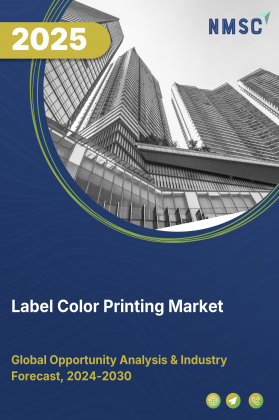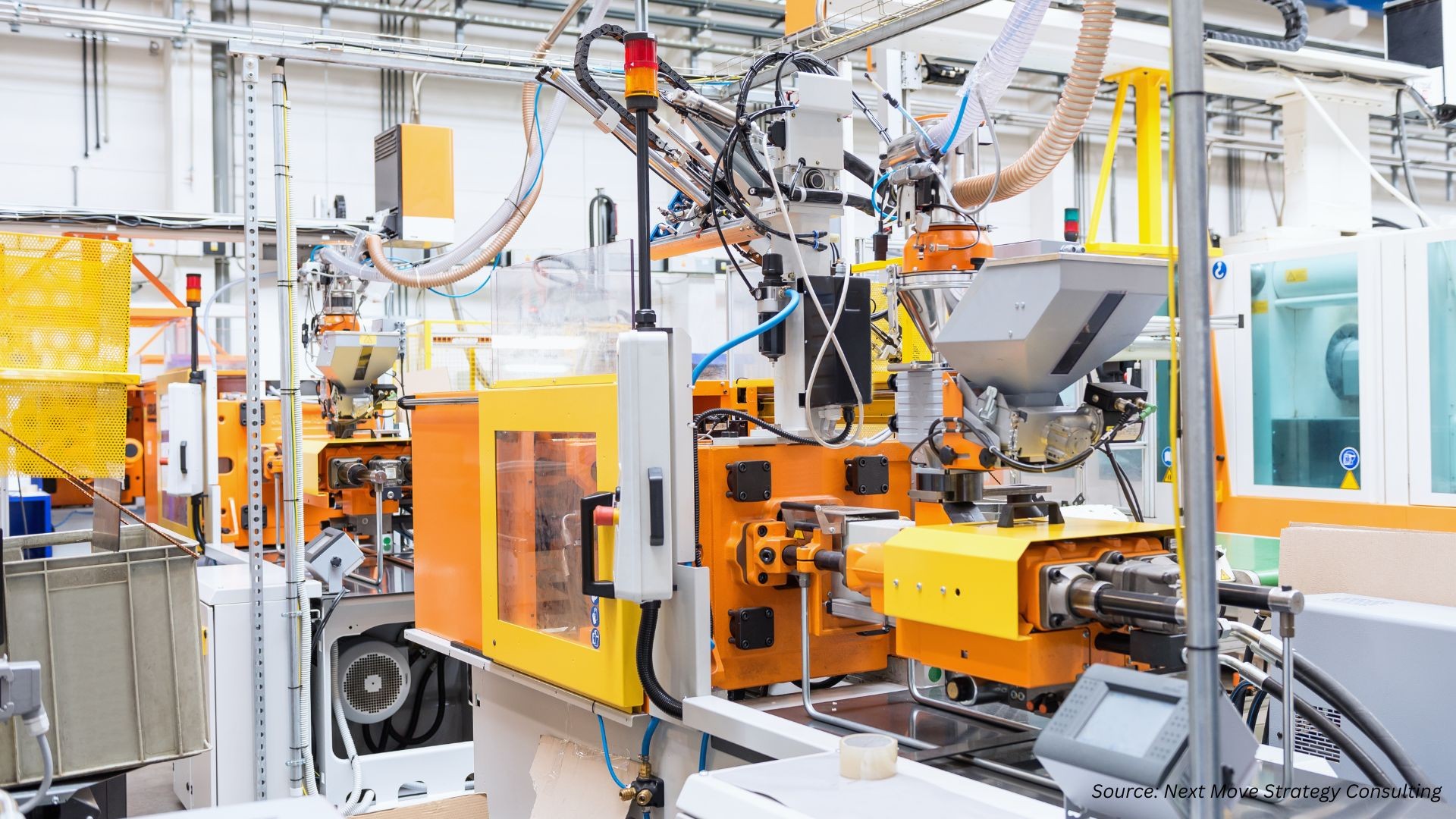
Canada Additive Manufacturing Market by Offering (Printers, Materials, Software, Services), by Technology (Fused Deposition Modelling (FDM), Stereolithography (SLA), Selective Laser Sintering (SLS), and Other), by Process (Powder Bed Fusion (PBF), Vat Photopolymerization, Binder Jetting, and others), by Application (Prototyping, Tooling, and Functional Part Manufacturing), by Vertical (Automotive, Aerospace & Defense, and Others)– Opportunity Analysis and Industry Forecast, 2024–2030.
Industry: Construction & Manufacturing | Publish Date: 15-Oct-2025 | No of Pages: 172 | No. of Tables: 184 | No. of Figures: 129 | Format: PDF | Report Code : CM647
Canada Additive Manufacturing Market Overview
Canada Additive Manufacturing Market size was valued at USD 243.7 million in 2023, and is predicted to reach USD 1061.3 million by 2030, at a CAGR of 21.9% from 2024 to 2030. In terms of volume, the market size was 10 thousand units in 2023, and is projected to reach 49 thousand units by 2030, with a CAGR of 23.9% from 2024 to 2030.
The additive manufacturing (AM) market, also known as additive layer manufacturing (ALM) or three-dimensional (3D) printing, represents the global industry dedicated to the development, production, and distribution of technologies and materials used to create three-dimensional objects layer by layer from digital models. This market serves various sectors, including aerospace, automotive, healthcare, and consumer goods, offering innovative solutions for prototyping, production, and custom manufacturing.
AM is renowned for its ability to produce highly complex and customized components with minimal material waste, leading to significant cost savings and environmental benefits. A key feature of this market is the diversity of printing technologies available, such as stereolithography (SLA), selective laser sintering (SLS), and fused deposition modeling (FDM), each tailored to specific industry needs and applications. Additionally, the rapid prototyping capability of AM accelerates product development cycles, allowing businesses to innovate and bring products to market faster than traditional manufacturing methods.
Strategic National Investments and Research Initiatives Accelerate Am Adoption
Canada is actively positioning itself as a global hub for additive manufacturing through significant public and private investments. National and provincial governments are funding advanced manufacturing research centers, innovation clusters, and pilot projects dedicated to AM technologies. These initiatives aim to enhance Canada’s manufacturing competitiveness by supporting the development of domestic 3D printing capabilities, particularly in metal AM.
Research collaborations between universities, technical institutes, and industry leaders are driving breakthroughs in material science, process optimization, and high-performance printing technologies. The presence of dedicated innovation hubs ensures that new AM techniques are quickly transferred from research environments to real-world applications. As a result, Canadian manufacturers now have access to state-of-the-art infrastructure and knowledge networks, which accelerates commercialization and adoption across industries such as aerospace, automotive, healthcare, and energy.
Ai-enabled Process Control and Digitalization Boost Metal Am Reliability
The integration of artificial intelligence (AI) and advanced data analytics is becoming a key growth driver for the Canadian AM market. AI-driven systems are being deployed to monitor critical variables such as laser power, material feed rate, and thermal profiles during the build process. By continuously analyzing real-time data, these systems can predict defects, optimize printing parameters, and automatically adjust production settings to ensure consistent quality.
This capability is particularly valuable for industries with stringent performance requirements, including aerospace and healthcare, where even minor deviations can compromise part reliability. By reducing trial-and-error cycles and minimizing waste, AI-driven AM solutions make large-scale production more economically viable. This not only improves operational efficiency but also gives Canadian manufacturers a competitive edge in global supply chains.
High Capital and Operating Costs Limit Widespread Adoption
Despite its many benefits, additive manufacturing remains a capital-intensive technology. The high cost of acquiring industrial-grade printers, metal powders, high-performance polymers, and software licenses can be prohibitive, especially for small and medium-sized enterprises (SMEs). In addition, there are recurring expenses related to maintenance, skilled workforce training, post-processing equipment, and quality control systems.
These financial barriers often delay adoption or restrict AM usage to prototyping rather than full-scale production. Many Canadian SMEs remain cautious about committing to such investments without clear return-on-investment projections. Addressing this challenge will require expanded government incentives, financing programs, and shared-access facilities that can lower the cost burden for smaller manufacturers and encourage broader participation.
Automation and Industry 4.0 Integration Unlock Scalable Manufacturing Potential
The next big opportunity for Canada’s AM market lies in the integration of automation and Industry 4.0 technologies. Automated systems for powder handling, print scheduling, quality inspection, and part removal are transforming additive manufacturing into a highly repeatable, end-to-end production solution. When combined with cloud connectivity, IoT sensors, and AI-powered predictive maintenance, these systems enable manufacturers to scale production without sacrificing consistency or precision.
This shift allows Canadian companies to move beyond small-batch prototyping and adopt AM for continuous, large-volume manufacturing. Sectors such as automotive, energy, and medical devices stand to benefit significantly by producing customized, complex, and lightweight components on-demand. In the long term, these advancements could position Canada as a leading exporter of high-value, AM-produced parts, contributing to stronger domestic manufacturing capabilities and global competitiveness.
Competitive Landscape
The prominent key players operating in Canada additive manufacturing industry include 123Proto, Agile Manufacturing Inc., Axis Prototype, CALGARY 3D PRINTING, Forge Labs, PyroGenesis Canada Inc., AON 3D, Javelin Technologies Inc., Voltera Inc., Tinkerine Studios Ltd, Stratasys Ltd., Canadian Additive Manufacturing, Solutions, Voestalpine Group, Nexa3D, Deci3D Printing Ltd., and others.
Canada Additive Manufacturing Market Key Segments
By Offering
-
Printers
-
Desktop Printers
-
Industrial Printers
-
-
Materials
-
Plastics
-
Thermoplastics
-
Photopolymers
-
-
Metals
-
Steel
-
Aluminum
-
Titanium
-
Nickel
-
Other metals
-
-
Ceramics
-
Other Materials
-
Wax
-
Laywood
-
Paper
-
Biocompatible materials
-
-
-
Software
-
Design
-
Inspection
-
Printing
-
Scanning
-
-
Services
ByTechnology
-
Fused Deposition Modelling (FDM)
-
Stereolithography (SLA)
-
Selective Laser Sintering (SLS)
-
Polyjet Printing/Multijet Printing (MJP)
-
Electron Beam Melting (EBM)
-
Digital Light Processing (DLP)
-
Direct Metal Laser Sintering (DMLS)
-
Other Technologies
By Process
-
Powder Bed Fusion (PBF)
-
Vat Photopolymerization
-
Binder Jetting
-
Material Extrusion
-
Material Jetting
-
Other Processes
By Application
-
Prototyping
-
Tooling
-
Functional Part Manufacturing
By Vertical
-
Automotive
-
Aerospace & Defense
-
Healthcare
-
Architecture & Construction
-
Education
-
Industrial
-
Energy
-
Printed Electronics
-
Jewelry
-
Food & Culinary
-
Other Verticals
Key Players
-
123Proto
-
Agile Manufacturing Inc.
-
Axis Prototype
-
CALGARY 3D PRINTING
-
Forge Labs
-
PyroGenesis Canada Inc.
-
AON 3D
-
Javelin Technologies Inc.
-
Voltera Inc.
-
Tinkerine Studios Ltd
-
Stratasys Ltd.
-
Canadian Additive Manufacturing Solutions
-
Voestalpine Group
-
Nexa3D
-
Deci3D Printing Ltd.
Report Scope and Segmentation
|
Parameters |
Details |
|
Market Size Value in 2023 |
USD 243.7 million |
|
Revenue Forecast in 2030 |
USD 1061.3 million |
|
Growth Rate |
CAGR 21.9% from 2024 to 2030 |
|
Market Volume in 2023 |
10 thousand units |
|
Market Forecast in 2030 |
49 thousand units |
|
Volume Growth Rate |
CAGR of 23.9% from 2024 to 2030 |
|
Analysis Period |
2023–2030 |
|
Base Year Considered |
2023 |
|
Forecast Period |
2024–2030 |
|
Market Size Estimation |
Million (USD) |
|
Growth Factors |
|
|
Companies Profiled |
15 |
|
Market Share |
Available for 10 companies |
|
Customization Scope |
Free customization (equivalent up to 80 working hours of analysts) after purchase. Addition or alteration to country, regional, and segment scope. |
|
Pricing and Purchase Options |
Avail customized purchase options to meet your exact research needs. |

















 Speak to Our Analyst
Speak to Our Analyst
























